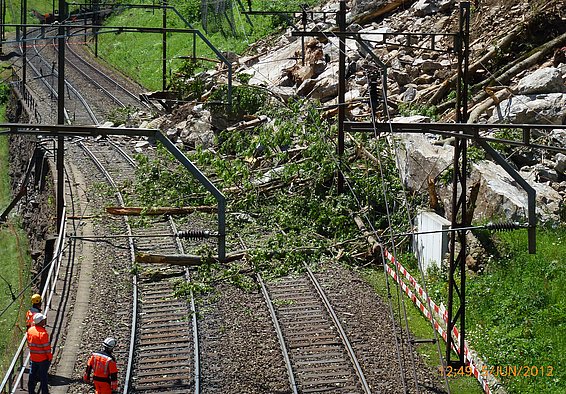In Switzerland, the potential for damage from natural hazards is increasing substantially. The main reason is the infrastructural and socio-demographic development combined with the global climate change. We research political and social processes in dealing with natural hazards so that the population can be protected as effectively and economically as possible.
Contents ¶
Since centuries, the Swiss population has learnt to live with devastations caused by natural hazards. Higher population density, investments in buildings and the expansion of traffic infrastructure boost the damage potential of such hazards. In the period between 1972 and 2020, the yearly average damage cost amounted to some 300 million francs.
Policy-makers and administrators are faced with the challenge of reducing risks by means of spatial planning, population protection and protective forests - at acceptable costs. This raises the question of how the population thinks about the respective measures, what costs they cause and how risk communication can be achieved in a way that is effective for successful risk prevention, emergency intervention and recovery. We investigate such questions in our economic and social science research. We make the results available e.g. to those responsible for security in a wide range of formats.
Our research concerned, among others, with the following topics:
- Prevention and risk reduction in diverse policy fields (spatial planning, civil protection and forestry)
- Individual and societal perception and understanding of natural hazard risks
- Participation in societal decision processes for coping with natural hazards
- Capacity building and resilience towards natural hazards
- Evaluation of the effectiveness of risk communication
- Economic aspects of natural hazards, e.g. for forest management, agriculture and tourism
- Users’ dealing with forecast and warning tools
Related Topics ¶
Contact ¶
Publications ¶
Projects ¶
Services and products ¶
Links ¶
- Drought-CH: Information platform for early detection of drought in Switzerland

